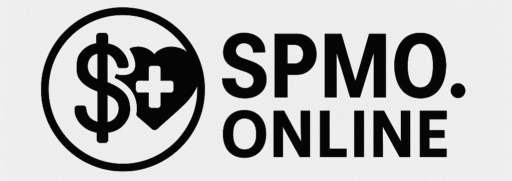Confused by health insurance deductibles? Discover how they work, why they matter, and how to avoid costly mistakes—save money on your plan today.
Ever opened a medical bill and thought, “Wait… isn’t this covered?” That’s where deductible health insurance catches most people off guard. While it sounds like another insurance term, this “little fee” can quietly drain your wallet if you don’t understand how it works. Choosing the wrong health insurance plan without knowing the deductible could cost you thousands of dollars yearly. Before you pay premiums another month, let’s break down the real cost behind your deductible—because understanding it could save you money, stress, and serious headaches.
What Is a Health Insurance Deductible?
So, what is a deductible in health insurance? Simply put, it’s the amount of money you must pay out-of-pocket for medical services before your insurance company starts helping. Think of it like a threshold. Until you reach that number, you’re footing the bill for most of your care.
Let’s say your deductible is $1,000. If you visit the doctor and the bill is $400, you pay it yourself. A few months later, you need a test that costs $700. You’d pay another $600 to meet your deductible, and then your insurance finally kicks in and helps with the rest. After that, you might still pay co-pays or a percentage (called co-insurance), but the insurance company shares the cost.
Many people confuse a deductible with a co-pay or think that once they have insurance, everything is covered. Not true! Understanding the meaning of deductible in health insurance is crucial so you’re not shocked when that first medical bill shows up. It’s the key to picking the right health plan and avoiding financial surprises.
How Deductibles Work (Step-by-Step)
Let’s break down how a health insurance deductible works in real life. Imagine your health insurance plan has a $1,500 deductible. That means you pay the first $1,500 of your medical costs out of your pocket each year before your insurance starts paying a share.
Here’s the step-by-step:
- You visit a doctor. The bill is $300. You pay it all.
- Later, you need lab work for $500. You pay that too. Total spent so far: $800.
- You then have a minor surgery that costs $2,000. You’ll pay the remaining $700 to hit your deductible.
Now that your deductible is met, your insurance will help, but not always fully. You may now pay 20% of the bill co-insurance, while your insurer pays the rest. This continues until you hit your out-of-pocket maximum—the most you’ll pay in a year.
The Hidden Truth: What Most People Overlook
Here’s the part about deductible health insurance that surprises most people—meeting your deductible doesn’t mean everything is free after that. Many think, “Once I hit that number, I’m done paying.” Not quite. After your health insurance deductible is met, you usually still owe co-pays or a percentage of each bill, which is called co-insurance.
Let’s say you’ve met your $1,500 deductible. You go to the hospital, and the bill is $4,000. If your co-insurance is 20%, you still pay $800. And if you haven’t hit your out-of-pocket maximum yet, the bills can keep increasing.
Also, not all services apply toward your deductible. Some preventive care, like check-ups or vaccines, might be fully covered even before you meet your deductible. On the flip side, depending on your plan, some expensive services may not count toward it.
How to Choose the Right Deductible for You

Choosing the right health insurance plan means picking the deductible that fits your life and budget. A high-deductible health plan usually comes with a lower monthly premium. That sounds great—until you need care and pay much out-of-pocket before insurance helps.
A high deductible plan might save you money if you’re healthy and rarely go to the doctor. But suppose you have regular prescriptions, a chronic condition, or kids who visit the doctor often. In that case, you might benefit from a lower deductible plan, even if the monthly premium is higher. You’ll pay more each month, but less when you use your coverage.
Also, consider whether your plan offers a Health Savings Account (HSA). These are only available with certain high-deductible health insurance plans and can help you save tax-free money to cover medical costs.
Conclusion
Understanding your health insurance deductible can greatly affect your financial health. Too many people sign up for a plan based on the monthly premium alone, not realizing how much they’ll pay when they need care. That’s when the bills hit—and the regrets follow.
The truth is, your health insurance deductible affects everything from doctor visits to emergency care. It’s not just a number—it’s a key part of your plan. Once you know the deductible’s meaning and how it fits with co-pays, co-insurance, and out-of-pocket maximums, you’re in control, not your insurance company.
Before choosing a plan, ask yourself: Can I afford to pay this deductible if something happens? If not, you may need a different option.

